Things bakers know: The simple trick for better pumpkin bakes
Cook your purée for boosted flavor and better texture.
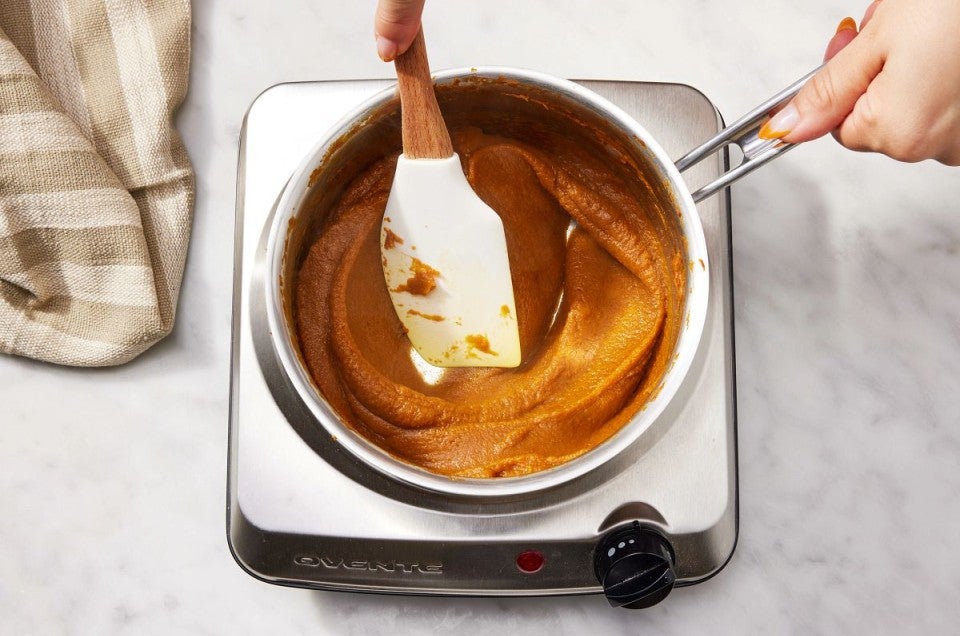

Pumpkin lovers, brace yourselves. Raw pumpkin is mostly water — up to 90%! — so it really doesn’t have much flavor. In fact, the flavor that we usually think of as “pumpkin” is actually pumpkin pie spice, a blend of ginger, cinnamon, nutmeg, and cloves. You might think you could overcome the lack of flavor by adding more pumpkin purée to your recipe, but you’d be mistaken: By the time you’ve added enough purée to taste it, your baked good would have a soggy texture on account of all that moisture.
Recently, our Test Kitchen was determined to figure out how to add pumpkin purée without introducing too much water. Test Kitchen Manager Sarah Jampel started by thinking about all the ways bakers try to concentrate pumpkin’s flavor. Some people try to drain off the water by straining it overnight, while others try to remove moisture by patting it with paper towels. But Sarah wanted to do something more impactful (and efficient).
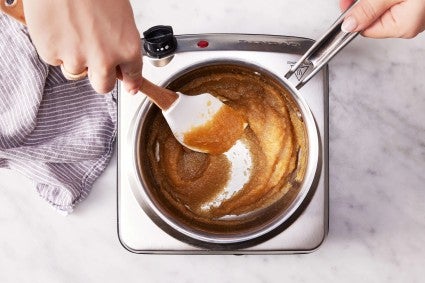
Sarah returned to the basic principle that the fastest way to get rid of water is to force it to evaporate via heat. In her Apple Butter Apple Galette, she turned applesauce into a thick, flavorful apple butter by cooking it on the stovetop. So, our Test Kitchen wondered, could the same technique be applied to pumpkin purée, allowing a relatively large amount to be crammed into baked goods without adversely affecting their texture?
The process is simple. By slowly cooking pumpkin purée on the stovetop (10 to 15 minutes, depending on the recipe), the water is forced to evaporate off, resulting in an ingredient that's thicker and more concentrated. The amount of water that gets cooked off is drastic — Sarah says the purée can be reduced by half (both in weight and volume).
And without all that water in the way, the natural sugar in the pumpkin has the opportunity to caramelize and brown, resulting in a more complex flavor.
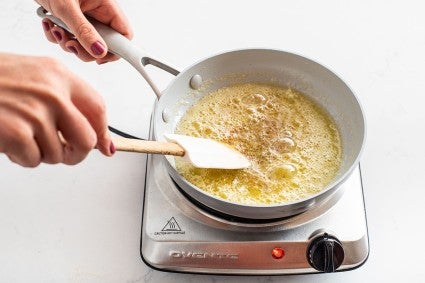
For even more flavor, you can add spices (like the celebrated pumpkin pie spice!) to the purée during the cooking step. Heating spices “blooms” them, releasing their flavorful, fragrant oils.
Fudgy-Chewy Pumpkin Cookies: Most pumpkin cookies are cakey, with a texture almost like muffin tops, in part due to the excess moisture in pumpkin purée. Before developing a new recipe for pumpkin cookies, Sarah tested a handful of the most popular recipes on the internet and found that even if they were chewy, they didn’t taste very much like pumpkin because of how little purée was in the dough.
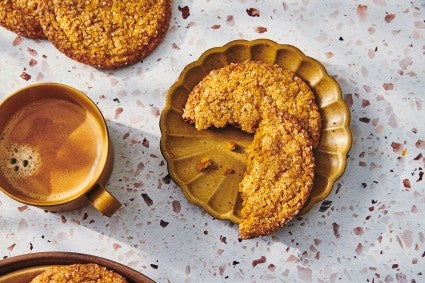
So Sarah reduced the purée on the stove to make pumpkin cookies that were dense, chewy, fudgy, and had big pumpkin flavor. In this recipe for Fudgy-Chewy Pumpkin Cookies, the moisture is cooked off of both the pumpkin purée and the butter used in the recipe; pumpkin pie spice is also incorporated into the dough, bringing even more warm, cozy flavor.
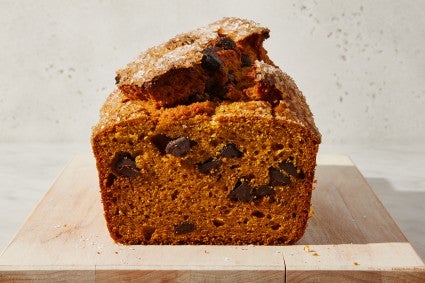
The Most Pumpkin Pumpkin Chocolate Chip Bread: Pumpkin bread is another baked good that commonly lacks pumpkin flavor. Most recipes call for less than 1 cup of purée to avoid a gummy texture, but since that’s less than a full can of storebought purée, you’re left with an inconvenient amount of leftover purée — and your bread only has faint pumpkin flavor. Sarah wanted to use an entire can of pumpkin to avoid leftovers while also ensuring the bread actually tasted pumpkiny, so she turned to the reduced pumpkin technique once again.
During the cooking process, the water evaporates, the sugar in the pumpkin starts to caramelize, and the spices bloom. The final product has a beautifully tender crumb, as well as bold pumpkin flavor.
When I asked Sarah if you could use this reduced purée technique in any pumpkin recipe, she said, “I wouldn’t do it in any recipe without making other changes. You’re losing so much moisture; you need to add it back in if you want a similar texture in your baked goods.”
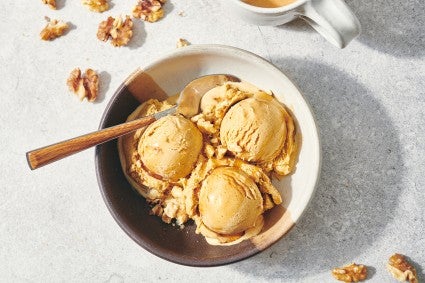
If you’d like to experiment, you can try reducing pumpkin and adding moisture back into your recipe in the form of milk, water, or another flavorful liquid like juice or liquor, but be aware that your results will likely vary. Sarah recommends sticking to recipes that were developed to use this technique if you want to be sure you end up with the maximum pumpkin flavor and the best texture.
Looking for more ways to amplify the flavors in your baked goods? Check out our video for Ultimate Brown Butter Rice Krispies Treats, which uses a few tricks like browning the butter and toasting the milk powder for layers of flavor.
Cover photo by Rick Holbrook; food styling by Kaitlin Wayne.
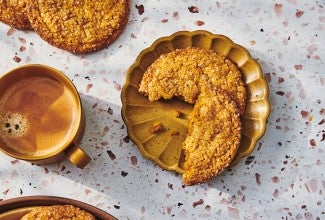


October 8, 2023 at 4:40pm
In reply to I found this most intriguing… by Susan Lopez (not verified)
Hi Susan! Using cooked pumpkin in a pumpkin pie would likely have too little moisture for the filling and cause the pie to crack severely so we would not recommend it. Happy baking!
October 8, 2023 at 11:56am
Can you use this technique in recipes that don't call for it, subbing in same amount of reduced puree by weight?
October 10, 2023 at 9:46am
In reply to Can you use this technique… by Akhila (not verified)
Hi Akhila, the issue with that approach is that an equal amount of reduced puree won't offer the same amount of moisture to the baked good, so it's likely to end up being dry. You'd be better off reducing the original amount, and then adding in enough water or milk to make up for the moisture lost in reduction.
October 8, 2023 at 10:48am
I understand slow & steady is the way to go when it comes to reducing but could you offer a little more insight? Assume we’re talking a lower temp but should it “simmer”, constantly stir it, etc?
October 10, 2023 at 9:30am
In reply to I understand slow & steady… by AmyK (not verified)
Hi AmyK, our Most Pumpkin Pumpkin Chocolate Chip Bread recipe does include more detailed instructions for reducing the pumpkin: Set over medium-high heat and cook, stirring frequently, until the pumpkin is darker in color and dry enough that it starts to stick to the pan, 12 to 15 minutes. Stir with more frequency towards the end of the cooking time and lower the heat as needed to prevent scorching. Transfer to a bowl or liquid measuring cup to cool slightly; you should have about 1 1/4 cups (375g) of the pumpkin mixture.
October 4, 2023 at 4:32pm
I was skeptical because I don't like having extra dirty dishes, but I did this a few days ago for the pumpkin chocolate bread and the result was great. Flavor and texture were better than any other pumpkin bread I've madem
October 17, 2023 at 5:12pm
In reply to I was skeptical because I… by Gretch (not verified)
Pumpkin chocolate bread?! Oh, that sounds yummy!
October 4, 2023 at 4:00pm
Love this idea! I have a recipe for pumpkin cheesecake that I make every Thanksgiving. It calls for spreading the pumpkin puree out on layers of paper towels and then covering the puree with more paper towel layers, letting it sit and gently pressing so the moisture is absorbed. Would this cooking technique work instead? What are your thoughts?
October 8, 2023 at 12:07pm
In reply to Love this idea! I have a… by Linda Lee (not verified)
Hi Linda, for this type of recipe you might want to cook the pumpkin for a briefer amount of time (maybe 5 minutes). That way the moisture loss won't be quite as significant. Since the pumpkin will further bake within the cheesecake, it's probably not necessary to cook it for an extended time. However, if you want to go for the full reduction, you will likely need to add water or milk to the mixture in order to adjust the consistency. If you want to be exact about this, you might want to make your recipe the usual way and weigh the pumpkin puree before and after you've applied the paper towel. By comparing the weight of the cooked puree, you can find out exactly how much liquid you will need to add when using cooked pumpkin puree.
Pagination